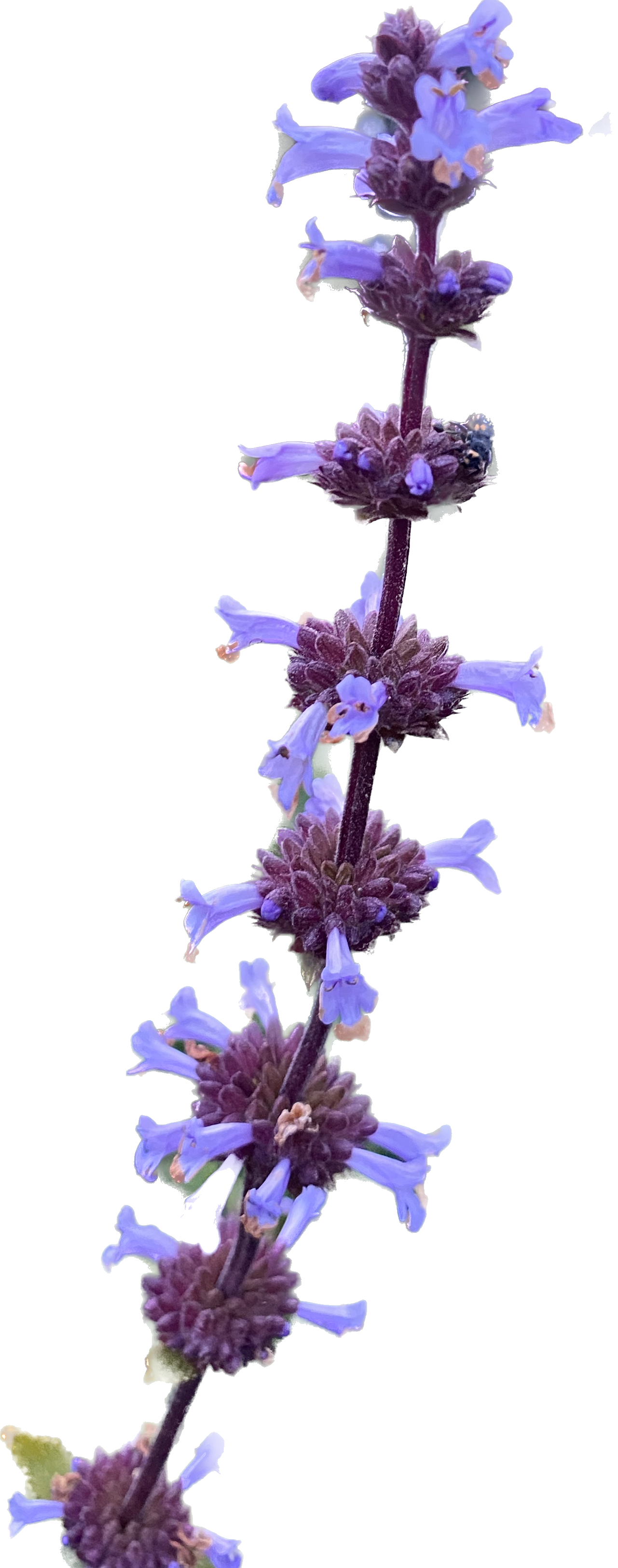

Munz's Sage | Salvia munzii
Salvia munzii, commonly known as Munz’s Sage, is a perennial shrub native to southern California and northern Baja California. A rare but resilient species, it thrives in coastal sage scrub and chaparral habitats, often found on dry slopes and ridges. Munz’s Sage is prized for its early-season blooms, aromatic foliage, and its value to native pollinators.
This compact, mounding shrub typically grows 2 to 4 feet tall and wide. Its small, dark green leaves are highly fragrant, releasing a spicy, sage-like aroma when touched. Flowering begins as early as February and continues through April, producing dense clusters of vivid deep blue to violet flowers. The blooms attract hummingbirds, butterflies, and native bees, making it an excellent choice for wildlife gardens and xeriscapes.
Munz’s Sage prefers full sun and well-draining soils, especially sandy or decomposed granite. Drought-tolerant once established, it requires minimal water and no fertilizer. It is an ideal plant for dry borders, slope stabilization, or as part of a native plant palette where reliable color and fragrance are desired early in the season.
Interesting Facts:
* Named after the renowned California botanist Philip Munz, this sage pays homage to his dedication to preserving the state's native flora.
* Munz's Sage is a pollinator magnet, attracting bees, butterflies, and hummingbirds, enhancing your garden's ecosystem and biodiversity.
* Historically used by Native Americans for its medicinal and culinary properties, this sage offers a connection to California's rich cultural heritage.
Height: 2–4 feet
Optimum Soil Temperature for Germination: 60°F–75°F
Blooming Period: February–April
Germination: 14–45 days
Sowing Depth: 1/8"
40 organically grown seeds per packet, untreated, non-GMO.







